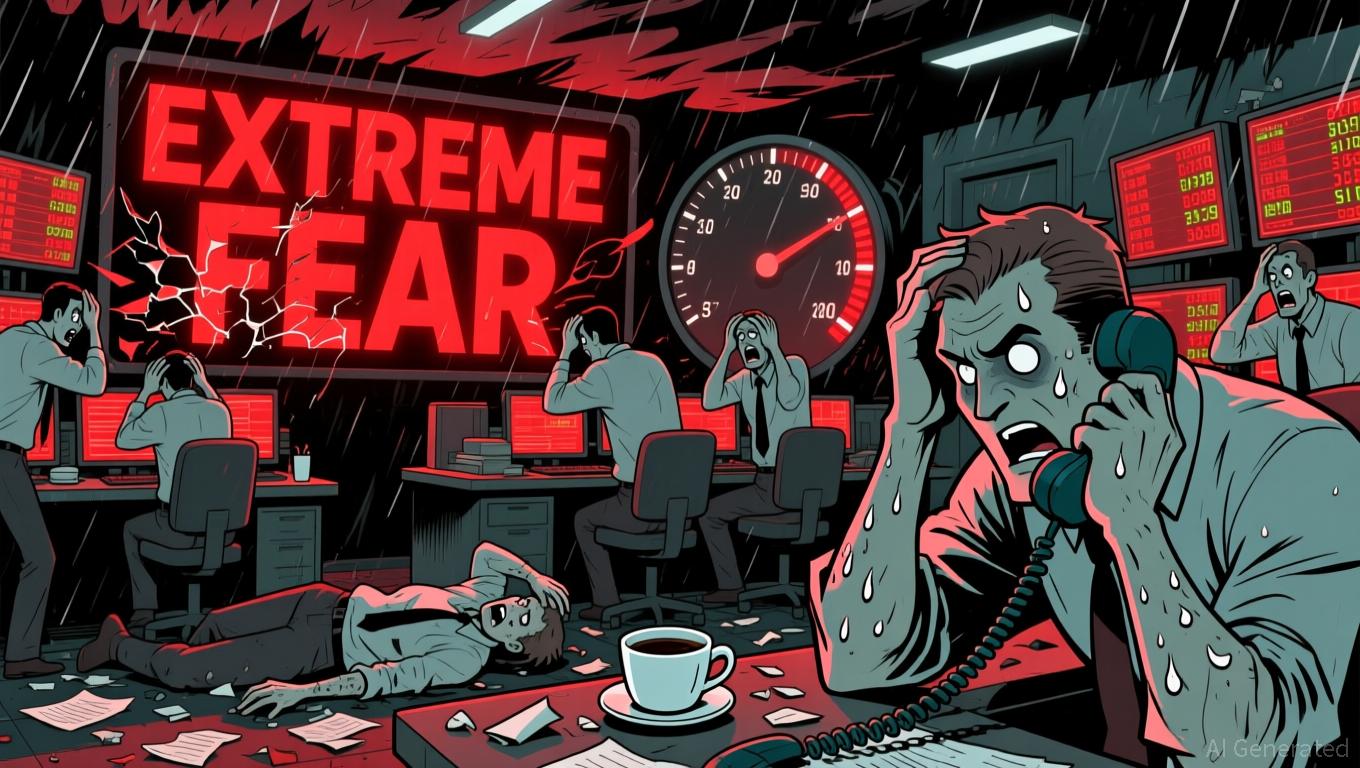U.S. Job Market Slows Down Amid Rising Layoffs and Fed Considers Rate Reduction
- ADP data shows U.S. companies averaging 2,500 weekly layoffs in late October 2025, signaling a slowing labor market. - Major corporations like Amazon and Target announced large-scale layoffs, driven by shifting demand and cost-cutting pressures. - 55% of employed Americans fear job loss, while the Fed considers a December rate cut amid "near stall speed" labor conditions. - Global regulatory scrutiny of tech giants and AI-driven automation adds to concerns about employment impacts and economic stability.
By late October 2025, the U.S. job market continued to exhibit signs of weakness,
Much of the slowdown in job growth can be traced to major layoffs at leading firms.
With official government labor data delayed, ADP’s reports have become a key indicator for the job market.

Political debate over job losses is increasingly focused on the role of artificial intelligence.
The challenges facing the labor market extend beyond the United States. The European Commission
At present, ADP’s findings highlight the vulnerability of the labor market, as businesses juggle cost controls with the need to retain staff. As the Federal Reserve considers its next steps, the combined effects of layoffs, regulatory scrutiny, and technological change are likely to shape the economic outlook in the coming months.
Disclaimer: The content of this article solely reflects the author's opinion and does not represent the platform in any capacity. This article is not intended to serve as a reference for making investment decisions.
You may also like
XRP News Today: Institutional Trust in XRP ETFs Fuels Hope Despite Widespread Crypto Slump
- XRP , Bitcoin , and Ethereum face sharp declines amid crypto market correction, with XRP dropping 15% to $2.17 as of November 14. - Analysts highlight XRP's $2.15 support level and potential $2.40–$2.70 rally if ETF inflows and institutional demand sustain momentum. - XRP ETFs attracted $243M net inflows despite whale selling 200M tokens post-launch, signaling mixed short-term pressure and long-term institutional confidence. - Franklin Templeton and Grayscale list XRP ETFs in DTC pipeline, while Bitget's

Bitcoin News Update: Impact of Leverage: $215 Million in Crypto Liquidations Reveal Market’s Underlying Vulnerabilities
- Crypto markets saw $215M+ Bitcoin futures liquidations as prices plummeted below $95,000, triggering panic across digital assets. - Analysts attributed the crash to profit-taking, macroeconomic uncertainty, and leveraged long positions wiping out 77.71% of Bitcoin's liquidations. - Despite turmoil, MicroStrategy's CEO Michael Saylor reaffirmed Bitcoin bullishness, denying claims of selling holdings amid $1.8M in company stock sales. - Tether's $1B robotics investment highlighted shifting capital flows, w

Hyperliquid News Today: Trump Clashes with Greene Regarding Epstein Documents Amid Crypto's Institutional Expansion and Market Fluctuations
- Trump withdraws support for Rep. Greene over Epstein files dispute, deepening GOP fractures amid IRS chief reversal and government reopening. - AMINA AG becomes first foreign crypto bank in Hong Kong with SFC license, expanding institutional access to Bitcoin and Ethereum . - Altcoins like Stellar (XLM) and Hyperliquid (HYPE) face sharp declines due to liquidation pressures and liquidity risks in decentralized markets. - Political tensions and crypto volatility highlight divergent challenges as instituti

Solana Latest Updates: Bitwise's Solana ETF Overtakes Grayscale by Offering Staking and Reduced Fees
- Bitwise's Solana ETF (BSOL) attracted $580M in three weeks, outpacing Grayscale's $24.4M inflows for its competing fund. - BSOL's 0.20% fee and staking integration differentiate it, enabling yield generation on Solana holdings for investors. - The fund's 14-day consecutive inflows highlight institutional confidence, supported by a $222.9M seed investment versus Grayscale's $102.7M. - Growing institutional adoption of crypto-native products signals shifting investor strategies toward blockchain exposure t
